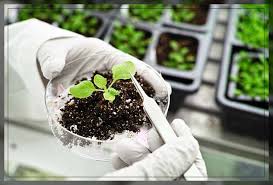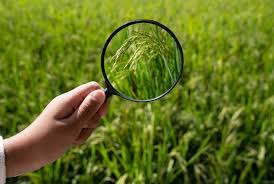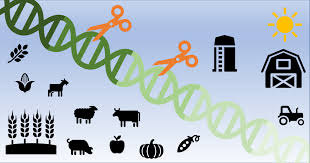The gene is the hereditary unit which is transmitted from parent to offspring from one generation to the next. The genes reside on a long molecule called deoxyribonucleic acid (DNA).
The DNA, in conjunction with a protein matrix, forms nucleoproteins and becomes organized into structures with distinct staining properties called chromosomes found in the nucleus of the cell.
Letters of the alphabet were used by Mendel as symbols for genes to avoid confusion as to which particular gene is being referred to. Certain terminologies were equally used by Mendel. These are described in this article and must be understood to appreciate genetics.
Read Also: What Kind Of Plastics Can Be Recycled?
Characteristics of Genes Relevant to Agriculture

Genes are the hereditary units that are transmitted from parent to offspring from one generation to the next.
The genes reside in a long molecule called deoxyribonucleic acid (DNA).
DNA plus protein make up chromosomes.
Chromosomes are found in the nucleus of the cell.
The behavior of the genes is parallel to that of the chromosomes.
Each gene occupies a specific position on a chromosome called the gene locus (loci, plural).
All the genes on any single chromosome form what is called a linkage group.
Wherever the chromosome goes, it carries all the genes in its linkage group. Linked genes are not transmitted independently of one another.
Genes in different linkage groups (on different chromosomes) are transmitted independently of one another.
Alphabet Symbols Used in Gene Identification
Mendel used alphabet symbols to describe genes. Capital (for example, A) signified the dominant, and lower case (for example, a) the recessive member of a pair of alleles.
For example, let the alphabet represent a tall plant and a dwarf/short plant. Lower case d will be used for dwarf plant while capital D for tallness. The parents (represented by the letter D) are (d), each with two members of the two alleles:
Tall parent X Dwarf/short parent
DD dd
Read Also:Tomatoes Farming: 9 Factors that Hinders High Yield for Profit
Important Terminology in Agricultural Genetics

1. Phenotype: This is the external appearance of an individual or plant which distinguishes it from other species or plants. The phenotype is determined by the genetic constitution of the plant, its environment, and the interaction between its genetic constitution and the environment.
This scenario can be represented in an equation:
VP = VG + VE + VGxE or VGE
The last two components VE and VGxE are the reason why two individuals with the same genotype can have different phenotypes.
2. Genotype: All genes possessed by an individual constitute its genotype. The genotype is what is inherited or genes passed on from the parents.
3. Homozygous: Union of gametes carrying identical alleles produces a homozygous genotype. A homozygous individual produces only one kind of gamete.
Example:
Egg (Female) Sperm (Male) Uniting gametes
→
4. Pure Line: A group of individuals with similar genetic background is often referred to as a line or variety. Matings between the homozygous individuals of a pure line produce only homozygous offspring like the parents.
5. Heterozygous: The union of gametes carrying different alleles produces a heterozygous genotype. Different kinds of gametes are produced by a heterozygote individual during gametogenesis.
When a pair of alleles comes to phenotypic expression only in the homozygous genotype, the allele is said to be recessive, while an allele which phenotypically expresses itself in the heterozygote as well as in homozygote is dominant.
These terms can be illustrated by considering a cross between tall and short plants.
This article has explained the gene, the use of alphabets as gene symbols, and genetic terminologies that are important in understanding the principles of heredity in agricultural genetics.
Do you have any questions, suggestions, or contributions? If so, please feel free to use the comment box below to share your thoughts. We also encourage you to kindly share this information with others who might benefit from it. Since we can’t reach everyone at once, we truly appreciate your help in spreading the word. Thank you so much for your support and for sharing!

